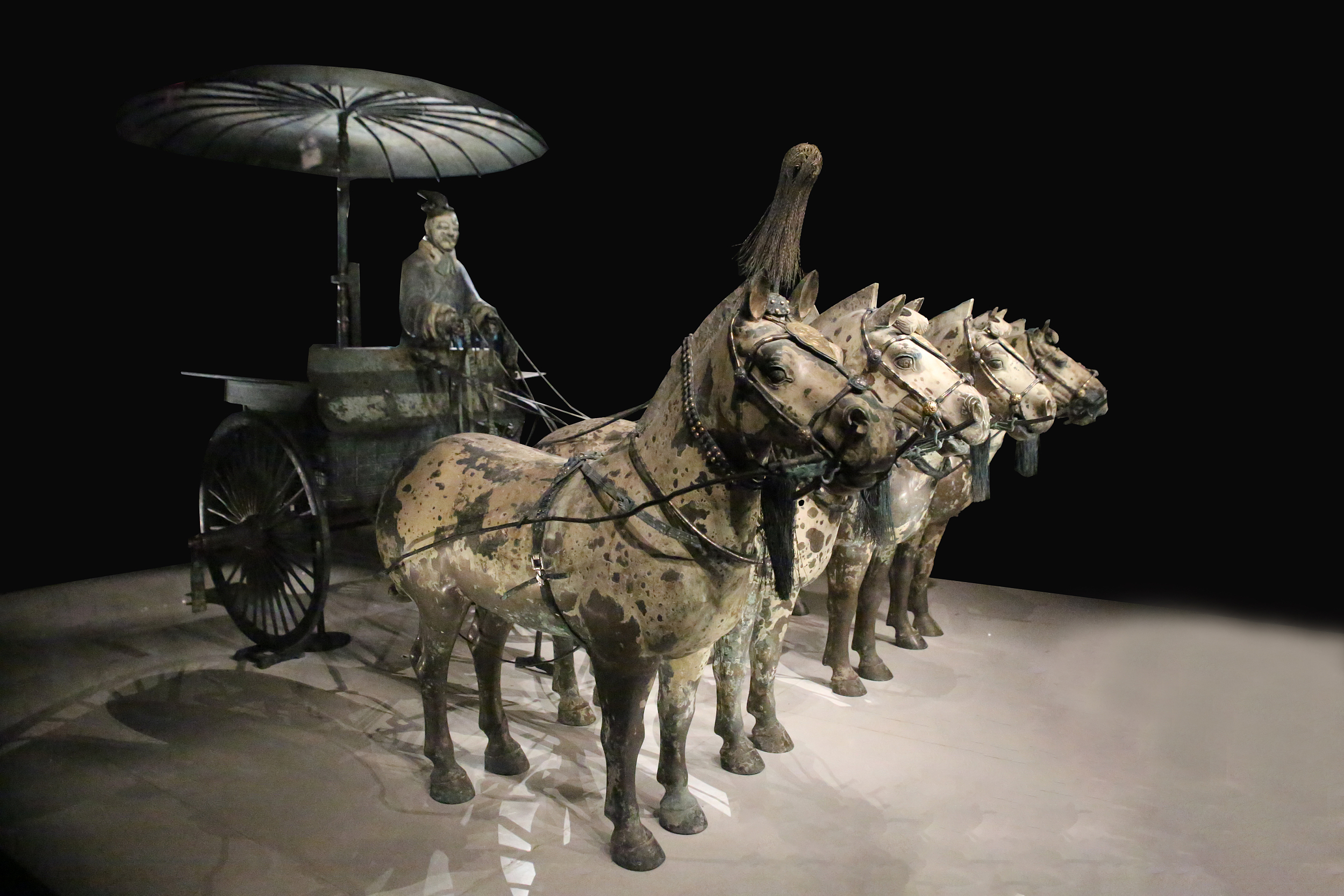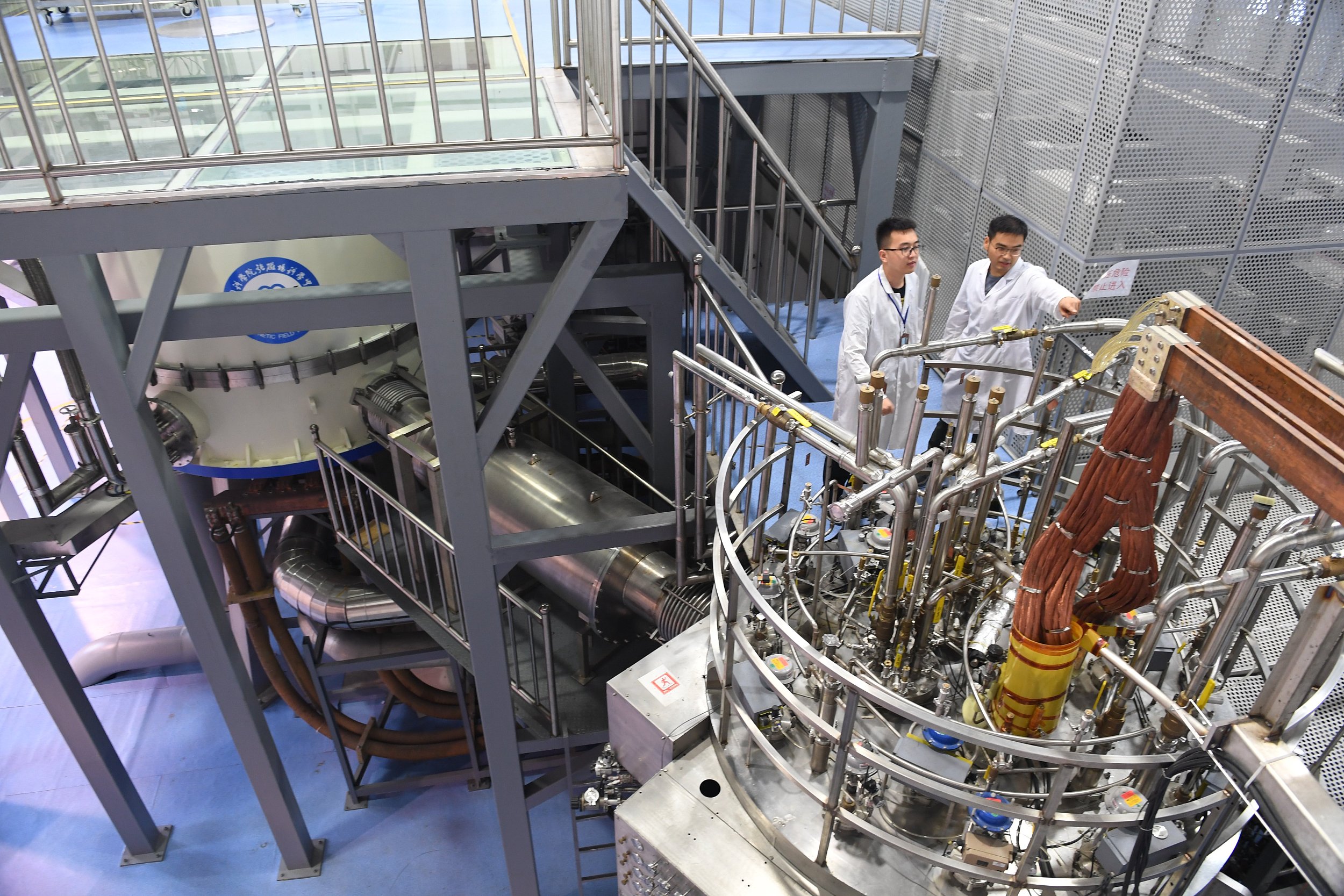Setting the Bronze Standard

"Bonze chariot number one" consists of an open chariot drawn by four bronze horses, with a single standing driver and a bronze umbrella. (PHOTO: VCG)
By BI Weizi
The Qin bronze chariots refer to two sets of large painted bronze models of chariots and horses, and their carriages, excavated in 1980 from the mausoleum of the first Qin emperor, Qin Shi Huang (247-220 BC), in Lintong, Shaanxi province. As a product made more than 2,000 years ago, its creativity is mainly expressed in three aspects: elaborate and complex structural design, advanced production techniques, and exquisite craftsmanship that combines scientific functions and artistic creation.
The bronze chariots and horses with gold and silver ornaments, weighing more than 14 kg, are made up of more than 3,500 parts using a variety of techniques such as casting, welding, drawing, inlaying, burring, polishing and other mechanical hot and cold working. The copper wire used in the jewelled necklaces and chains on the horses is only about half a millimeter in diameter, and the facial expressions of the horsemen are vivid, representing the brilliant achievements of Chinese metalworking techniques over two thousand years ago.
The Qin bronze chariots are painted throughout and lavishly decorated, in an attempt to accurately imitate the original. The painting not only makes the pattern on the bronze more colourful, but also cleverly hides defects such as trachoma and repair marks that occured during manufacturing, and slows down the oxidation process of the metal.
Chariots and horses have influenced humankind for thousands of years, not only as a means of transport, but also on the battlefield. The finely crafted Qin bronze chariots are tangible evidence of China's mature vehicle construction and yoke-type tethering methods of 2,000 years ago.


